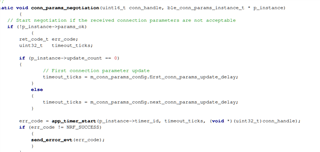A quick question. I've made an App based on the peripherals not required by the SoftDevice, in particular s112 states RTC0 and TIMER0 are used.
I'm moving onto the Bluetooth side and I noticed in several nrf libraries there are additional? timer's being used. It looks like there's one timer per peer connection, though I'm struggling to navigate my way through the non existent code documentation.

Can anyone share some light?


